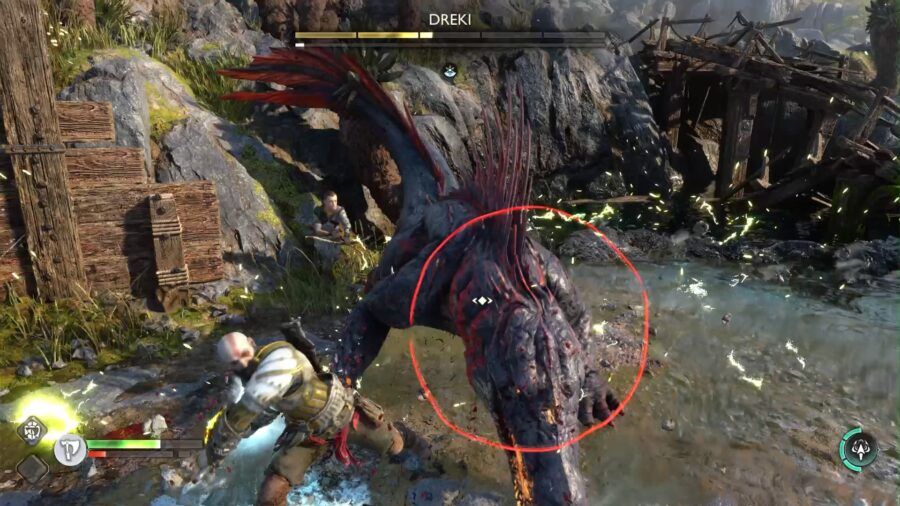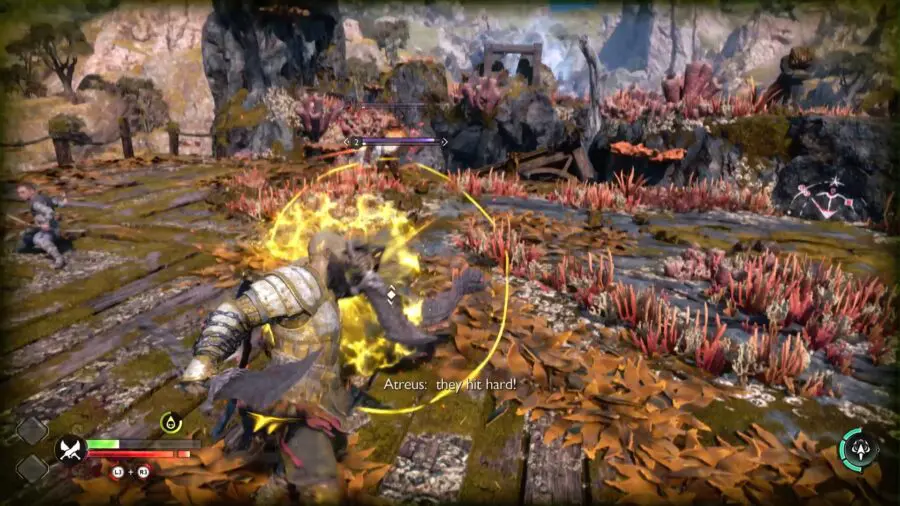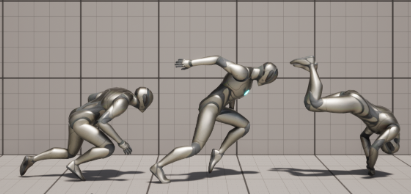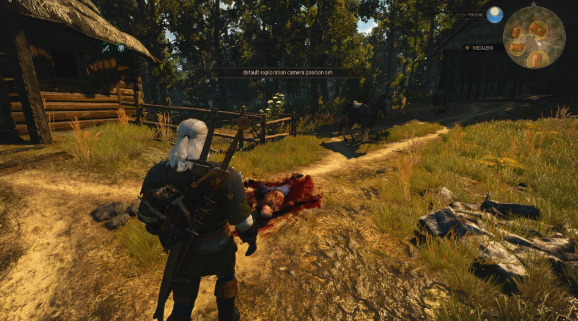These mechanics will be how the player interacts with the game world, whether it be how the player fights the enemies of Arcadia or how they level up The Knight etc.
Combat Mechanics:
These mechanics cover any and every mechanic the player will actively engage in when fighting hostile NPCs.
Swordplay
Following my research on medieval swordplay, I believe that the swordplay mechanics should be affected by: The weapon and armour the player has equipped. Firstly, the weapon that they have equipped should effect the attacks that the player has. For example, a zwei-hander (two handed sword) would be much heavier and longer – resulting in harder-hitting and longer attacks; at the cost of being extremely slow. Additionaly, a smaller sword that is able to be used with one hand would be much lighter and therefore quicker – allowing the player to react, parry and strike much quicker at the cost of dealing less damage
Furthermore, although this may not be the most accurate depiction of swordplay, I think that the choice to add pirouettes and flashy sword menouvers into the swordplay’s animation would benefit the game a lot. After researching The Witcher 3: Wild Hunt’s combat, I have concluded this would make fighting much more enjoyable for players.
Gaurding
This will put the player in a defensive stance and reduce the damage they take from physical attacks, however, this will not have an effect on enemy skills/casts. Furthermore, some enemies will have attacks that cannot be gaurded or parried, this will be shown with a red effect around the enemy, similar to the red circle in God of War. These attacks must be dodged, otherwise the player will take full damage from the attack.

Parrying
Having another defensive manoeuvre in a game that heavily relies on its combat is essential for players to have a fun, varied and skilful experience and a parry mechanic does just that. Although being much harder to implement than a dodge roll, it makes up for this with its benefits of staggering and/or damaging the enemy. Giving players this option also allows for more skill expression, tasking them with getting the timing down and asking themselves if the risk-to-reward is worth the attempt.
In order to get the timing right, for enemy skills that can be parried or blocked, a yellow visual effect around the enemy. Similar to the yellow circles in God of War. If the player succesfully times the parry. Otherwise, they will bear the brunt of the damage.

Dodge roll
The dodge roll is a pillar of third person PVE combat, existing in games almost two decades ago: The Legend of Zelda: Ocarina of Time, Dark Souls, Kingdom Hearts, Gears of War etc. This ability gave players a way to avoid damage and create space in one fluid motion, the dodge roll can be as powerful or unimportant as a game decides it to be.

Although it seems like a simple mechanic, its balance hangs on the edge of a knife – having too many invinsiblity frames in a dodge roll can make it too powerful and make it seem like the only good defensive option for players. Whereas, making it too difficult to use could frustrate players and make the combat experience less enjoyable.
Abilities/Usables
Explained by the Death System below, these abilities will be unlocked after certain circumstances are met, they will act as a sort of “rock-paper-scissors” system (explained in the Skills post) in the sense that each ability will be strong against certain enemies but weaker against others. It is up to the player to plan out how they will approach the game in order to maximise their utility of these abilities; furthermore they will exhibit certain features based off of one of the four characterisitcs of emotional abuse that they stem from. For example, the “Ice” ability, coming from The Queen who has the characteristic of control, will be able to “control” enemies it hits – like a root (A form of CC that makes the character unable to move).
These abilities will be selected from a wheel that they can choose from at any moment (After a x second cooldown), then executed by using their “spell” key bind. The ability wheel will be similar to that of the hand signs from The Witcher 3: Wild Hunt (Seen to the right). Furthermore, this wheel will also choose which usable item the player wants to use on their “item” key bind, these usable items could be: Healing item, Potion to provide the player with specific buffs, Ranged weaponry, The light source required to explore dark parts of the map etc.

Player Stats/ Resources:
Health
Health is stored as an integer but shown in the player’s HUD as a bar, taking damage will decrease this health (starting from 100); if health fully depletes the player dies. In order to increase health after taking damage the player must consume health items such as food and potions – potions restore more HP (Health Points) than food but cost more from the Merchant. However, finding a campfire in order to save the game will completely restore health without the use of any consumables.
Stamina
Most physical combat actions use up stamina but not at the same amount, light attacks use less stamina than heavy attacks etc. Defensive manoeuvres such as dodge rolling and guarding also require stamina. However, completing a successful parry restores 50% of missing stamina; rewarding players for being more skilful. Stamina is automatically regenerated after 2 seconds of no stamina usage.
Mana
When using any skill, mana is depleted. The amount of mana that is used per skill is equivalent to how many upgrades the skill has, the higher the skill level, the more mana is used. However, this mana can be increased depending on the items that the player has equipped. Mana is automatically regenerated after 5 seconds of no mana usage, or upon the use of a Mana Regeneration Potion
Currency
Usually in the form of gold coins, the player is able to obtain currency from: NPCs, Enemy loot, Chests etc. Which can then be spent at the merchant in order to purchase items of their choice (Weapons, Equipment, Potions etc. ). Some of these items are necessary in order to access certain areas of the game (see “Gear/Item System” below)
Soul Fragments
Obtained upon death, based on how well the player performed during that specific life. These Soul Fragments are spent on the skill tree and benefit the player throughout the rest of their playthrough. The further the skills are on the skill tree, the more Soul Fragments they require – in return, these skills will be more powerful than the ones before them. It is also possible to upgrade unlocked skills with more Soul Fragments. However, certain areas of the skill tree will stay locked until certain parts of the game are cleared (see “Ability System” below).
External Combat Systems:
Equipment:
The Player is able to obtain pieces of equipment from: The merchant, Chests, Enemy loot etc. Each of these pieces of equipment will grant the player with extra stats, with higher tiers of equipment being harder to obtain but granting greater stats. Some generalised stats will include, but not be restricted to:
- Armour – Reduces the amount of physical damage taken (Swords, Bows, Axes etc.)
- Magic Resistence – Reduces the amount of magical damage taken (Spells, Non-physical attacks)
- Increased Mana
- Increased Luck – Better chances at higher tier equipment from chests and enemy loot
Some pieces of equipment will also have combat related stats that allow the player to create optimised builds depending on their chosen skill tree path and/or play-style:
- Increased Magic Damage (Element Specific) – Fire/Ice/Shadow/Trickster skills do more damage
- Decreased Cooldowns on spells
Progression Mechanics:
Ability System
Upon death the player will be allowed to spend points in an ability unlock/upgrade tree depending on their performance for that life. This performance will be dependant on: Experience (How many enemies they were able to kill during that life); Progression (How many new savepoints they were unable to unlock) and Bosses killed.
In terms of unlocking one of the four abilities, the player must have completed at least the first area of one of the four enemy regions in order to unlock the ability that links with that area. For example, ice abilities can be unlocked after beating the first area in the Queen’s region. Each ability is a manifestation of the child’s ability to confront and overcome his fears and traumas. This requirement of completing the first area prohibits players from being able to unlock all of the abilities at their first death.
Death System
Being able to unlock new abilities would just result in the player dying on purpose in order to become stronger and stronger. To balance this, there must be a system in place that punishes the player for dying. This would be the illusion, the Knight’s perception of his reality changes as he dies, becoming more and more aware of the real world and that he is merely a child’s toy.
As the illusion fades, the Knight becomes more toy-like – meaning his animations become more frigid and jerky. The result is that his physical attacks become weaker and his health pool decreases, but more importantly, if the Knight dies too many times the illusion completely fades and the player reaches the ‘bad ending‘.
Gear/Item System
As the player explores, they will defeat enemies, bosses and open chests – all of which provide the player with varying amounts of currency (Gold Coins). These gold coins can then be spent at the Merchant who will sell a player a variety of things: Weapons, Armour, Usable items, Potions, Food etc. Another item on sale will be a “hidden” item, it will have no item description – unlike the other items – but it will allow the player to see in the dark. Granting access to certain areas that would otherwise be unexplorable.
Depending on what items the player has equiped (Armour and weapon) the Knight will weigh a certain amount, depending on this weight the Knight will move, jump, attack, parry and dodge slightly slower every x kg after totalling y kg in weight. These numbers x and y will have to be tweaked to perfection to make sure that each item is balanced.
Camera Mechanics:
Immersive Camera
In scenarios where the focus is on what’s in front of the player, the camera will settle on an ‘over-the-shoulder’ angle. This will ensure the player character is still visible but the centre of the screen – the focal point – is freed for more important matters

Lock-on Camera
During combat, the enemy in front of the player is the main focus. As opposed to having to aim each attack directly onto them – it is much more intuitive for the camera to constantly face towards the enemy, and for the player to always hit them if they are within range. This lock-on can be done with the press of a button and swap between enemies using the ‘Look around’ control.
